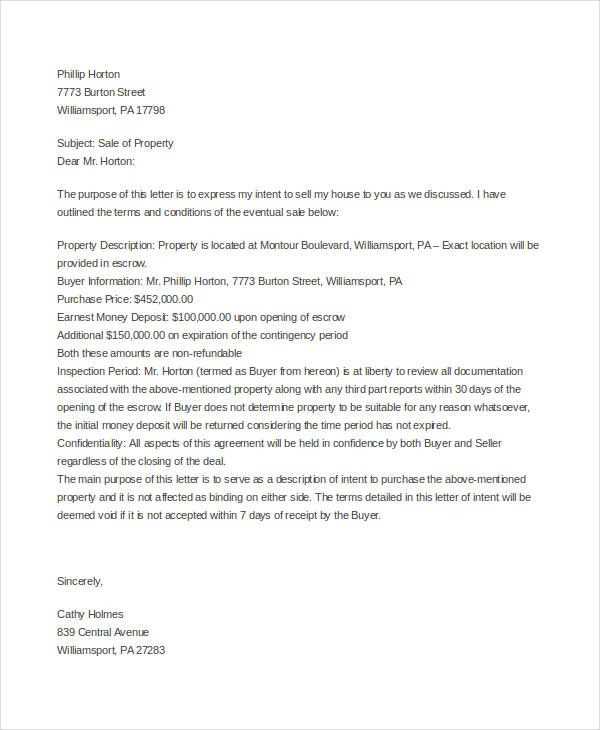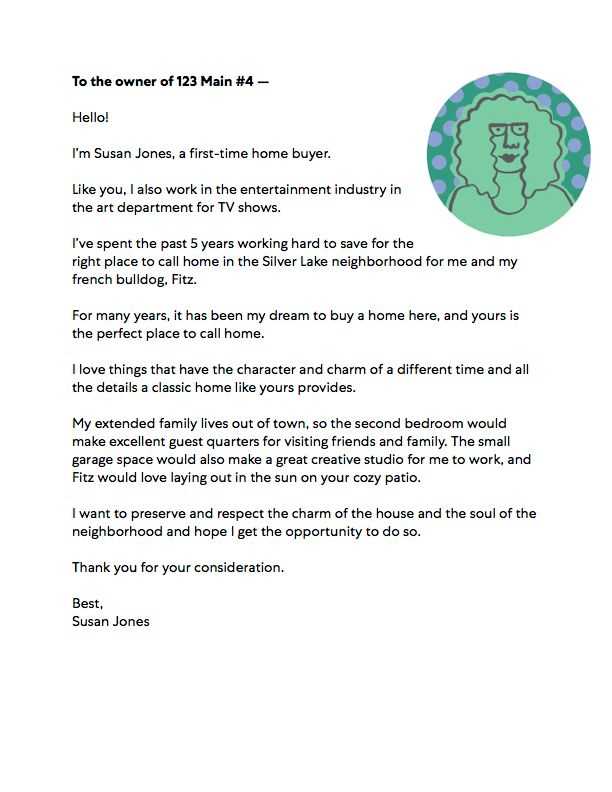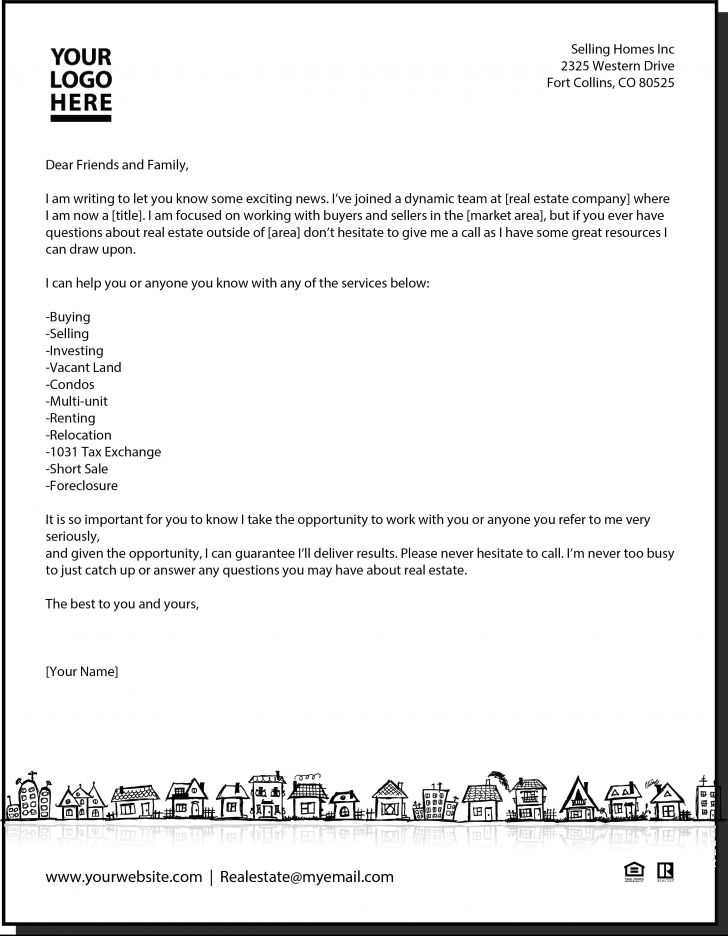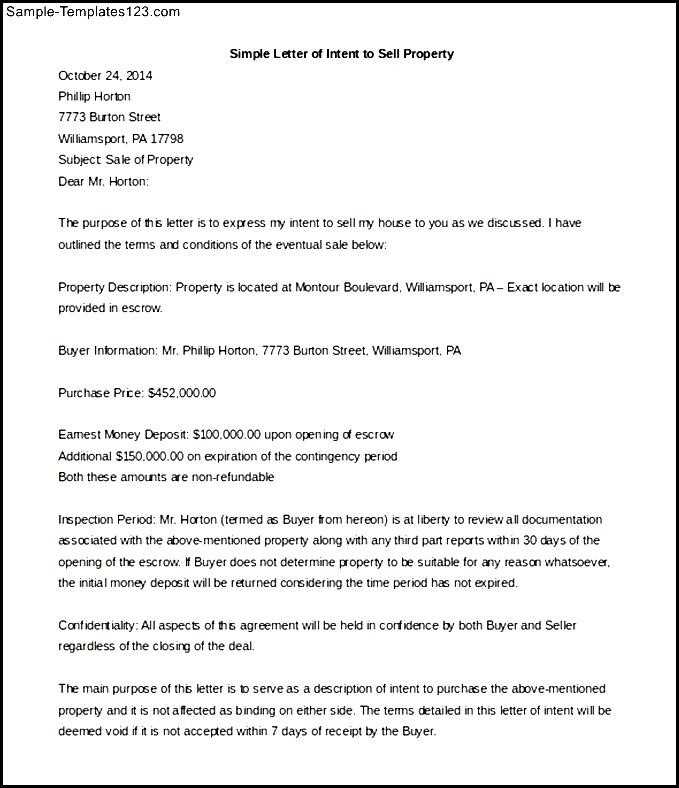Letter to home seller template

Crafting a letter to a home seller can set you apart in a competitive real estate market. It offers a personal touch that strengthens your offer and shows the seller you’re not just another buyer, but someone genuinely interested in their property. Whether you’re a first-time homebuyer or looking to upgrade, a well-written letter can build rapport and increase your chances of success.
Keep it concise and to the point. Sellers often receive numerous offers, so a short and impactful letter ensures it stands out. Start with a friendly greeting and express your genuine appreciation for the property. Mention specific features of the house that appeal to you, demonstrating you’ve taken time to understand what makes it unique.
Be sincere and personal. Sellers often have a strong emotional connection to their home, and acknowledging this can go a long way. Share why the home is a perfect fit for your needs or dreams, whether it’s the location, the layout, or the memories you envision making there. Keep the tone positive and respectful, showing you are eager, but not overly pushy.
Close with gratitude. End your letter by thanking the seller for their time and consideration. Let them know you would love to make the house your new home, and express your willingness to move forward quickly with the process. A warm and appreciative conclusion reinforces your sincerity and strengthens your appeal.
Letter to Home Seller Template
Start your letter with a warm and direct greeting. Address the seller by name if possible. A simple yet polite introduction sets a positive tone for the rest of the message.
Express your interest in the home. Be specific about what drew you to the property, whether it’s the layout, location, or unique features. Showing enthusiasm lets the seller know you’re serious about the purchase.
Make Your Offer Clear
After expressing your interest, clearly state the offer you are willing to make. Include your proposed price and any relevant conditions, such as financing arrangements or contingencies. This helps set the stage for negotiations and avoids ambiguity.
Highlight Your Flexibility and Commitment
Show that you’re flexible by mentioning any ways you can accommodate the seller’s timeline or specific needs. Whether you can be flexible with the closing date or are willing to work around the seller’s situation, these details can strengthen your position.
Conclude the letter by thanking the seller for their time and consideration. Let them know you’re eager to hear back and open to further discussions.
How to Address the Home Seller Professionally
Address the home seller with respect and clarity in your communication. Use a polite greeting like “Dear [Seller’s Name]” to establish a professional tone from the beginning. Avoid informal language or overly familiar terms unless you have established a more casual rapport with the seller.
Be concise in your language. Focus on the key points related to the property or the offer you are making. Clearly express your interest or intent without unnecessary details, while remaining friendly and courteous. For example, “I am interested in your property at [address] and would like to discuss the next steps.”
Show appreciation for the seller’s time and consideration. Acknowledge any positive features of the property that stood out to you. A simple statement such as, “The updates to the kitchen are impressive,” can create a favorable tone for your communication.
If there are any concerns or requests, phrase them diplomatically. Rather than directly questioning or demanding, offer your thoughts in a way that invites discussion. For instance, “I was wondering if you might consider revisiting the asking price, given the market trends.”
Conclude your message with a professional sign-off like “Best regards” or “Sincerely,” followed by your full name. This leaves a lasting impression of professionalism and ensures the communication remains formal and respectful.
Key Points to Include in Your Opening Paragraph
Your opening paragraph should immediately convey your genuine interest in the property and establish a connection with the seller. Start with a clear statement of why you are excited about their home. Mention specific features that attracted you, such as the neighborhood, the layout, or any unique aspects that caught your attention.
Make it Personal

Introduce yourself and provide a brief background. Share why this property is a good fit for you, whether it’s for your family, work, or lifestyle. Personalizing the letter helps the seller see you as more than just a buyer.
Be Clear and Direct
Clearly express your intentions. If you are serious about making an offer, let the seller know upfront. This can set the tone for the rest of the letter and show that you are ready to move forward.
| Point | Why It’s Important |
|---|---|
| Personal Connection | Helps build rapport and shows genuine interest in the home |
| Clear Intentions | Signals readiness to make an offer and engage in negotiations |
What to Say About Your Interest in the Property
Be clear and specific about why you are drawn to the property. Highlight the features that stand out to you the most, such as the layout, design, or the neighborhood. Let the seller know what makes their home special in your eyes. This shows that you’ve paid attention to details and aren’t just sending a generic offer.
Point Out Specific Features You Like
- Mention the spaciousness of the rooms or any unique architectural details.
- Express appreciation for any recent renovations or upgrades that have been made.
- If you admire the outdoor space, point out the yard, garden, or patio area.
Explain Why the Property Fits Your Needs
- Talk about how the layout works well for your lifestyle, whether it’s the number of bedrooms or the flow between spaces.
- Point out the location if it’s convenient for work, school, or other activities that matter to you.
- Explain how the neighborhood matches your preferences, like being close to parks, shops, or public transport.
By being specific, you show genuine interest and build a connection with the seller. This approach can make your offer stand out and encourage a positive response.
How to Express Your Financial Position Clearly
Be direct and transparent about your financial situation. Provide a breakdown of your available funds, including the amount you can put towards a down payment and any financing you plan to secure. This gives the seller a clear understanding of your financial capabilities.
- Down payment: State the exact amount you are prepared to offer. This shows you are serious and have your finances in order.
- Mortgage pre-approval: Share details about your pre-approval status. If you have a pre-approved mortgage, mention the loan amount, interest rate, and term length. If you are still in the process, explain when you expect to receive it.
- Cash offer: If you can make a cash offer, highlight this point. Cash deals can make your offer more attractive and less risky for the seller.
Be honest about any conditions tied to your financial situation. If you need to sell a property before closing or require time to secure additional financing, explain this upfront. Sellers appreciate knowing what to expect.
- Contingencies: Specify any contingencies related to financing, such as needing approval from another lender or waiting for your current home to sell.
- Timeline: Share your expected timeline for finalizing your finances, and clarify if any delays are possible.
Avoid being overly detailed, but include enough to demonstrate your preparedness. Keep it clear, concise, and factual to foster trust and a positive impression.
How to Mention Potential Deal Breakers or Conditions
Be clear and direct when addressing potential deal breakers or conditions. Avoid vague language. For example, if you need repairs done, specify which areas require attention and the extent of the work. This reduces misunderstandings and sets realistic expectations.
State Your Conditions Clearly

If you are requesting certain conditions, such as a price reduction due to issues with the property, mention it explicitly. Instead of saying, “I need some adjustments,” write something like, “I would like to request a $5,000 reduction in the sale price due to the need for roof repairs.” This makes it easier for the seller to understand your position and respond appropriately.
Address Time Sensitivity

If the deal depends on specific timing or external factors, mention that upfront. Whether it’s a mortgage approval, an inspection, or finalizing a sale within a particular timeframe, outlining these conditions early prevents delays later in the process. For instance, “I will need confirmation on the seller’s acceptance of the repair request within five business days to proceed.”
By being straightforward and specific, you help avoid confusion and ensure the seller knows exactly where you stand on key issues. It also allows for smoother negotiations and saves time for both parties.
Best Practices for Closing Your Letter to the Seller

Conclude your letter with a clear expression of gratitude and enthusiasm for the home. A simple “Thank you for considering my offer” can make a significant impact. This shows appreciation for their time and effort in reviewing your proposal. Pair this with a reaffirmation of your genuine interest in the property, like “I am truly excited about the opportunity to make this home my own.”
It’s also helpful to mention your readiness to move forward with the transaction. Phrases such as “I am looking forward to working together to finalize this process” convey confidence and show you’re prepared for the next steps. This reassurance can build trust with the seller, knowing that you’re serious about the offer.
Close with a respectful sign-off, such as “Best regards” or “Sincerely.” Be sure to include your name and contact information, making it easy for the seller to reach out if needed. This personalized closing leaves a positive impression and encourages open communication.